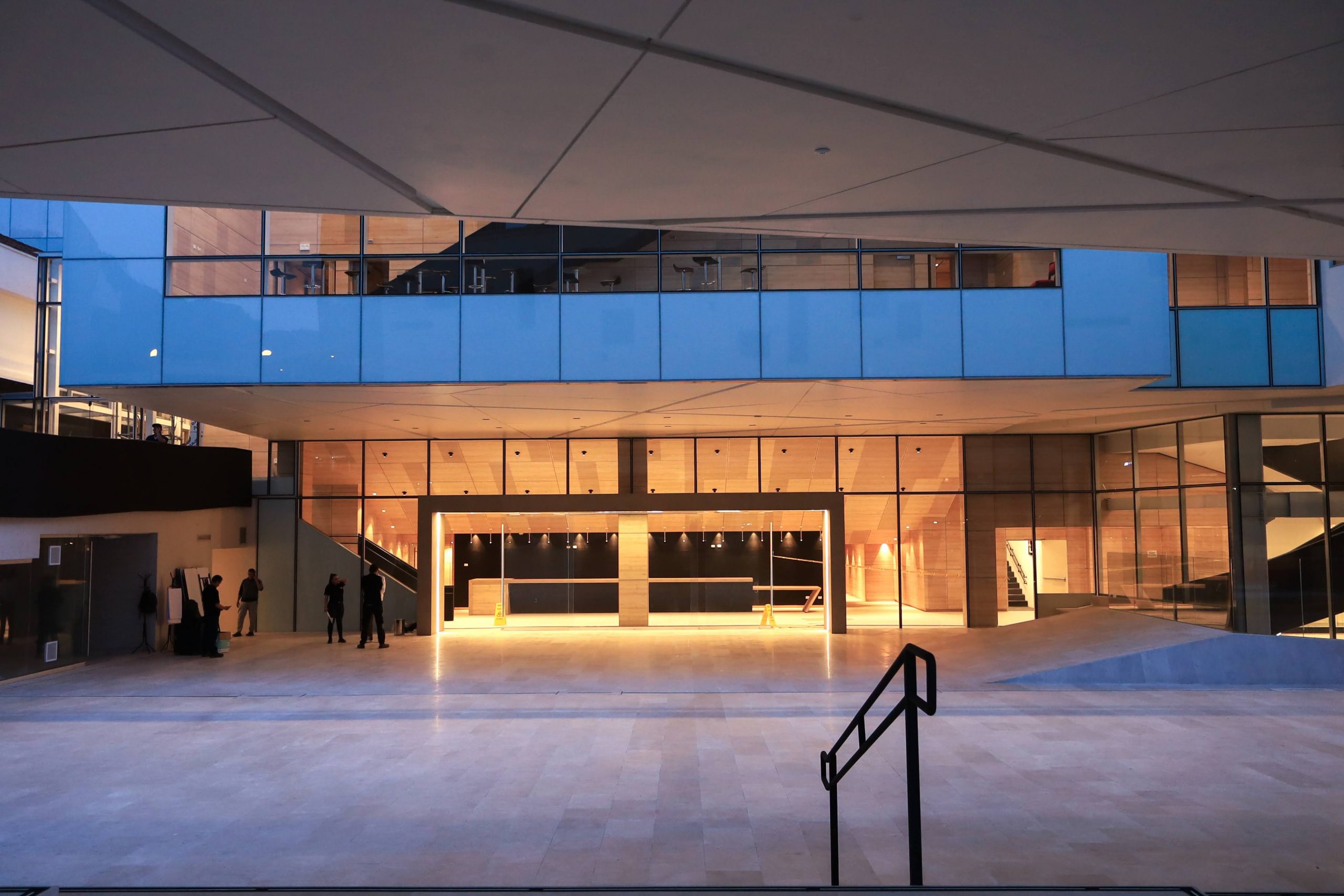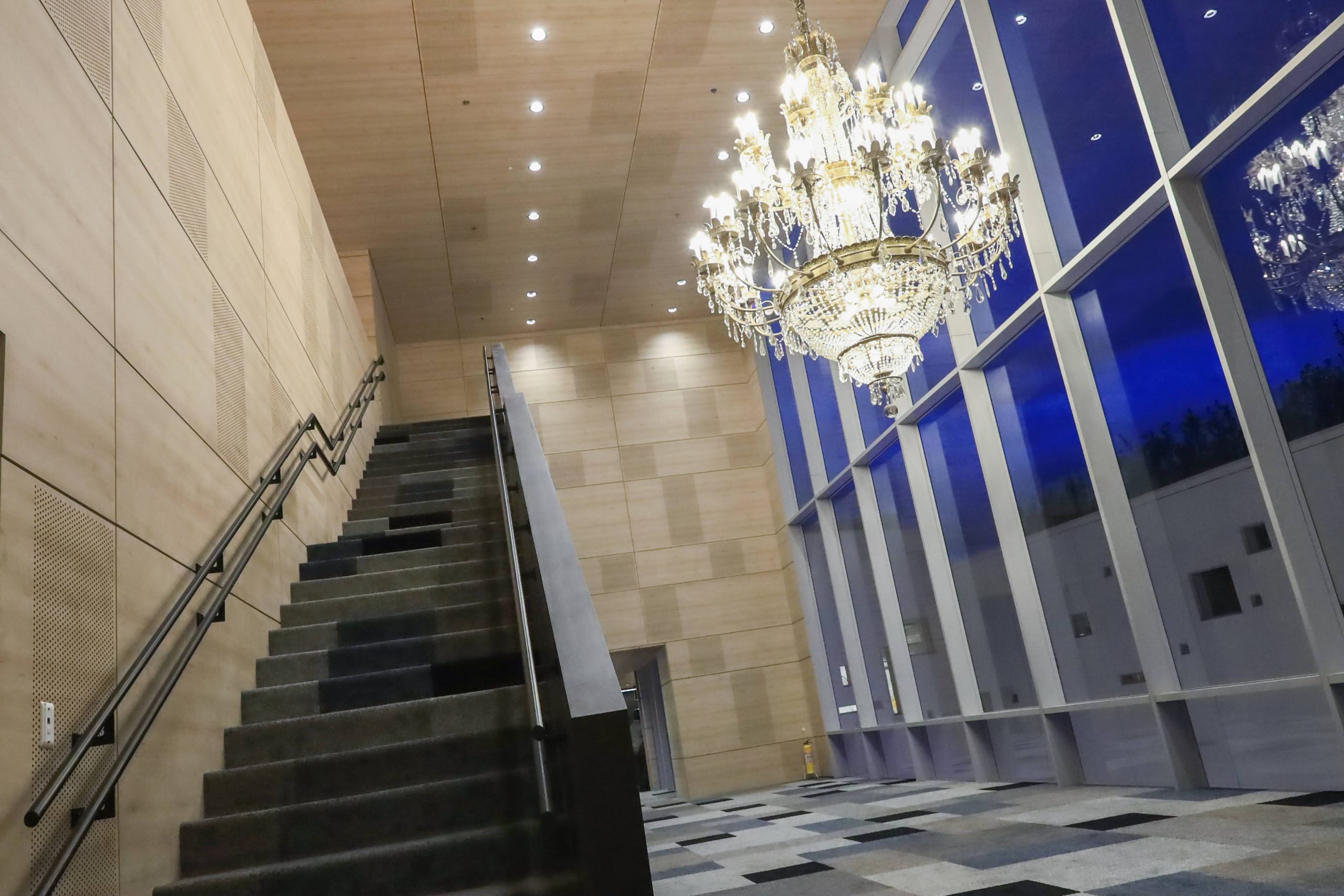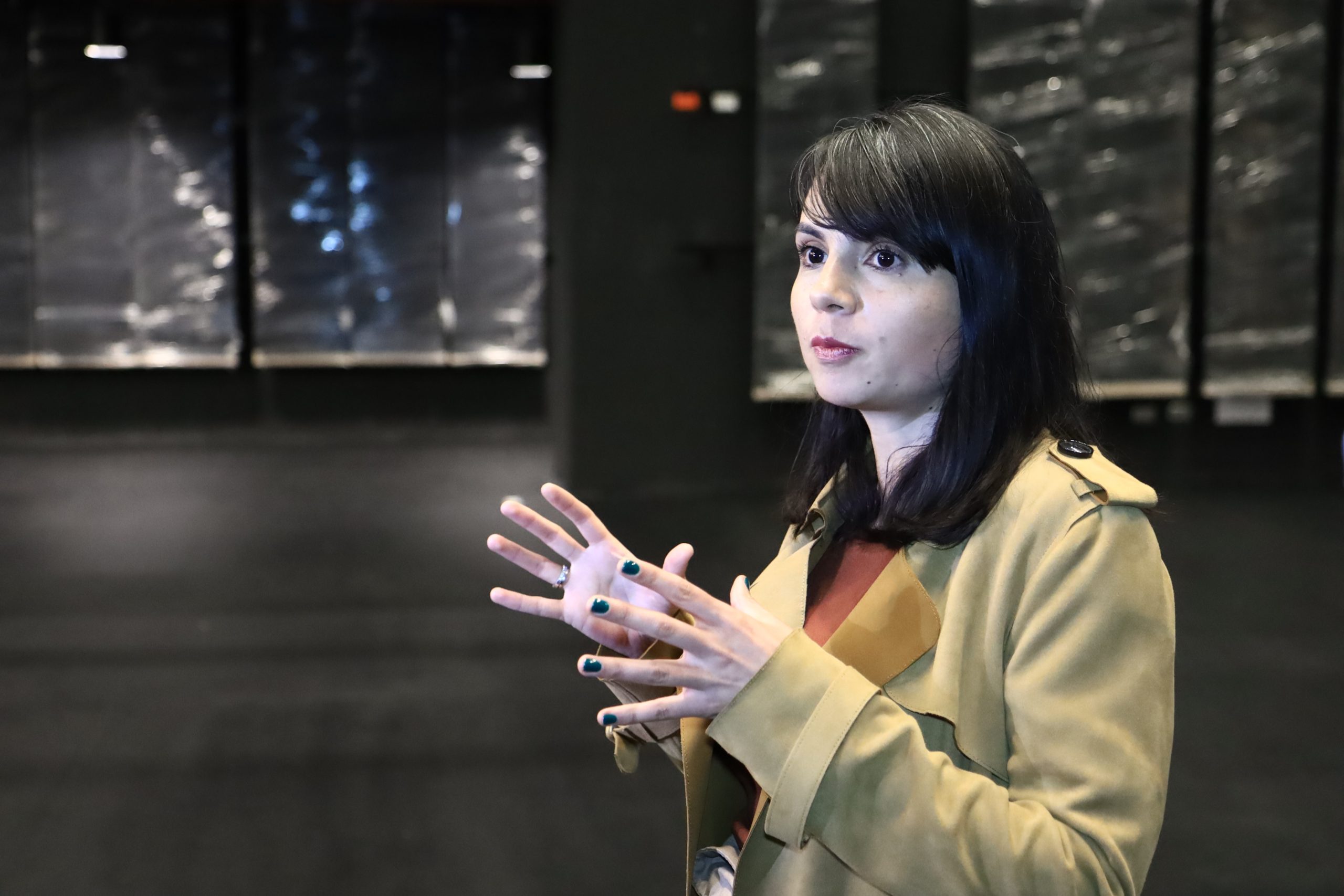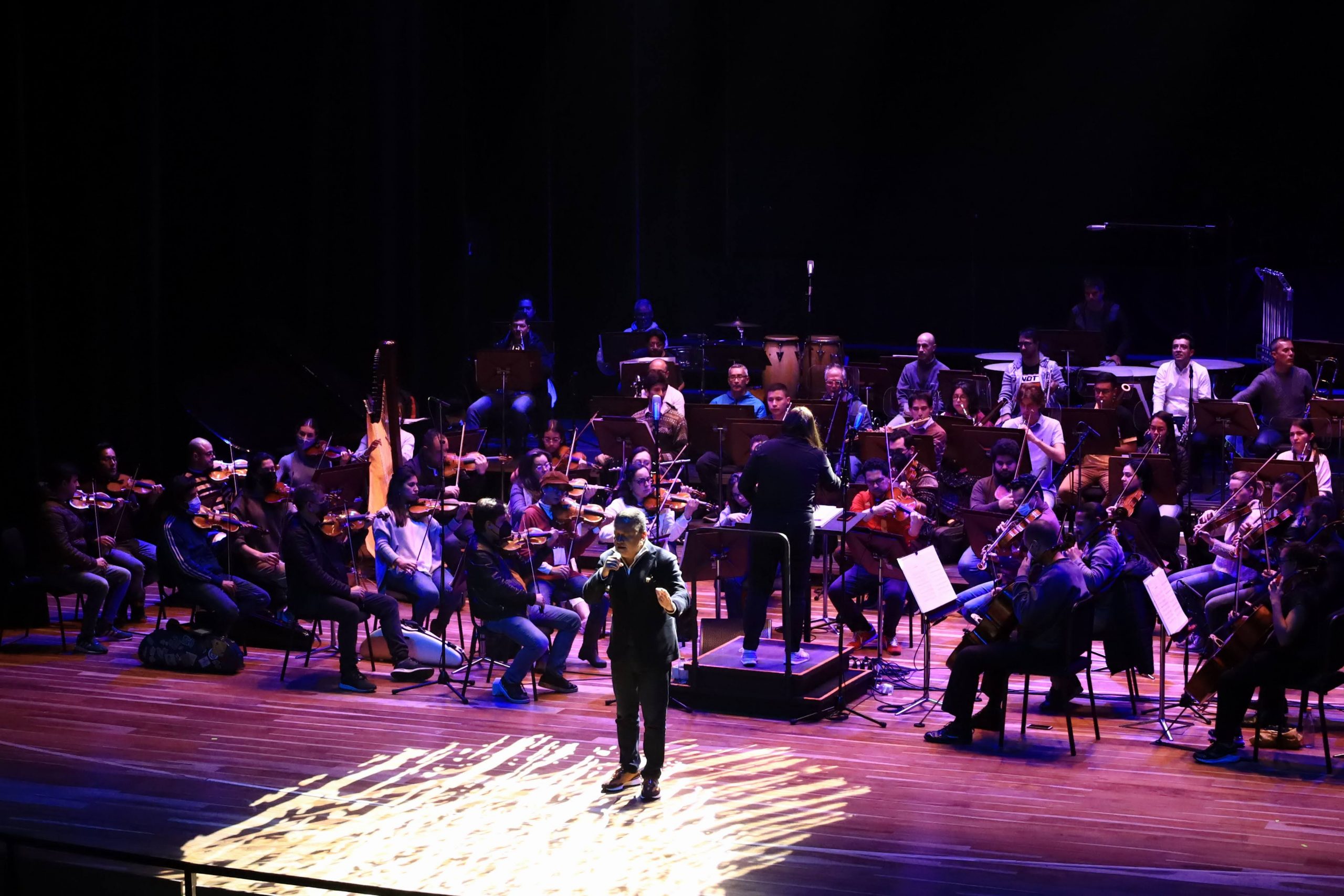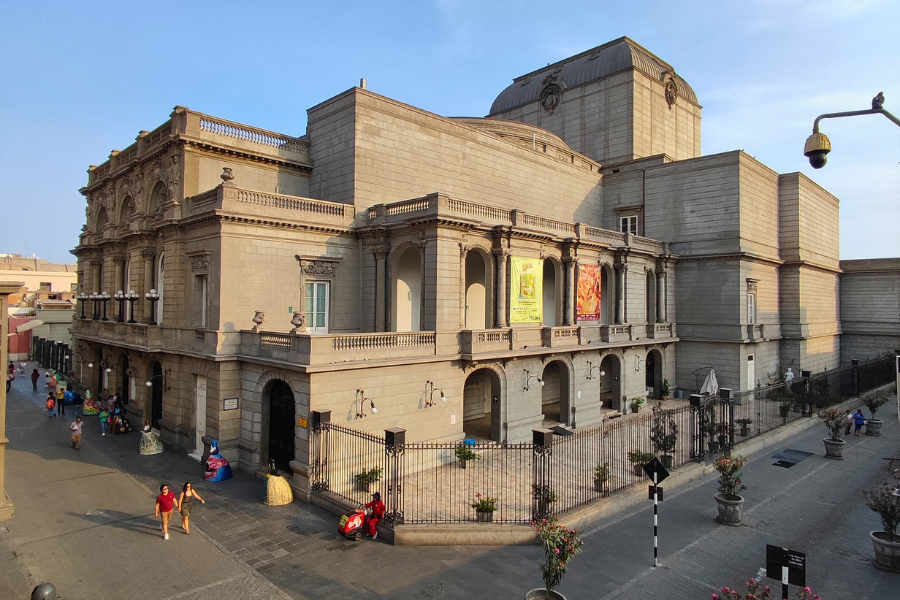Se inaugura el Centro Nacional de las Artes en el Teatro Colón de Bogotá
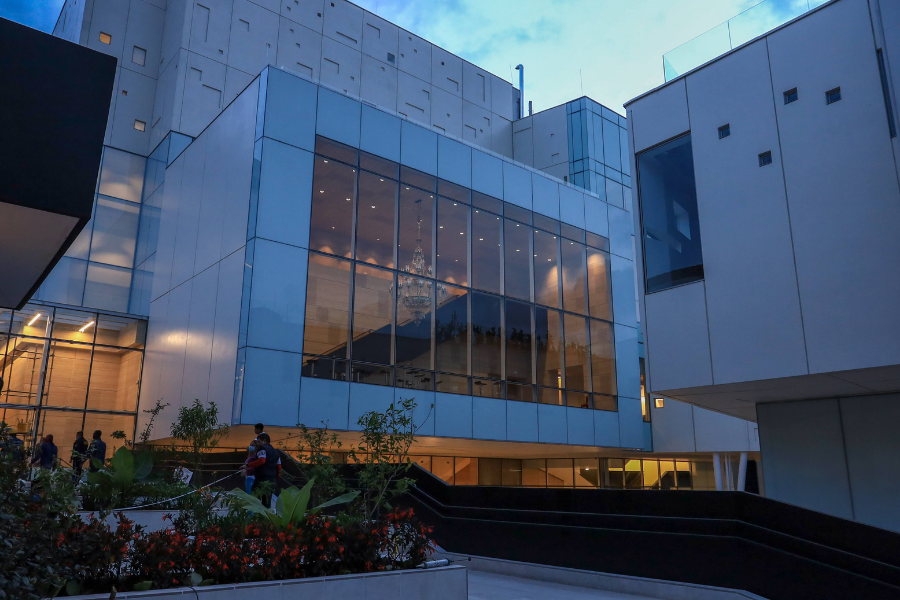
El nuevo Centro Nacional de las Artes, el escenario cultural más grande de Colombia, cuenta con más de 17.000 metros cuadrados de espacio. Tres salas, una de ellas en homenaje a la legendaria bailarina y gestora cultural Delia Zapata Olivella; la sala experimental denominada Fanny Mickey y una sala de ensayos para orquestas sinfónicas. Más de 1.500 artistas, nacionales e internacionales se beneficiarán con este megaproyecto que espera recibir a más 50.000 espectadores al año.
En Colombia se inaugura un nuevo espacio para el encuentro de las artes, la creatividad, la danza, la música, el teatro y aquello que nos une, la cultura. Se trata del Centro Nacional de las Artes, una imponente obra de infraestructura cultural que se lleva las miradas de los gestores, creadores culturales, artistas y la del público expectante por conocer sus tres salas y recorrer los más de 17 mil metros cuadrados de espacios, que engalanan a este centro cultural y lo convierten en un referente para el mundo.
«Estas son obras que quedan para la ciudadanía y que quedan para Colombia, y que permiten convertir a esta zona en el Área de Desarrollo Naranja más importante del país. Aquí no solamente tendremos al Teatro Colón, el Centro Nacional de las Artes, también el edificio restaurado Casa Liévano y tendremos la Biblioteca Luis Ángel Arango y galerías, centros culturales y este se convertirá en uno de los lugares con mayor visita de turismo no solamente en Colombia sino en América Latina. Hoy tenemos todos los colombianos que sentirnos orgullosos. Todos los colombianos debemos unirnos en un solo propósito hacer de la cultura el más importante sello de distinción de nuestro país ante los ojos del mundo», expresó el presidente Iván Duque en el evento de inauguración.
Esta obra, situada a dos cuadras de la Plaza de Bolívar, en el corazón de Bogotá, cuyo centro histórico es Patrimonio Cultural de la Nación, se constituye en el desarrollo de infraestructura cultural más importante para Colombia en los últimos años. Con una inversión superior a los 130 mil millones de pesos, el Centro Nacional de las Artes consta de tres salas, dotadas con la mejor tecnología para la puesta en escena de la sinfónica, obras teatrales y proyectos culturales de talla internacional.
“Se trata de la obra de infraestructura cultural más importante y de mayor dimensión que ha desarrollado el Ministerio de Cultura en sus 25 años de existencia, aproximadamente 17 mil metros cuadrados, con una inversión que supera los 130 mil millones de pesos, que consolidarán este lugar como el espacio de difusión del talento nacional y especialmente, de las artes escénicas”, indicó la ministra de Cultura, Angélica Mayolo.
El Centro Nacional de las Artes se convertirá en un lugar de encuentro y apropiación cultural donde 1.500 artistas realizarán presentaciones de espectáculos de gran formato que serán acogidos por más de 50 mil espectadores al año.
“Estamos convencidos que con esta infraestructura cultural, Colombia hoy cuenta con un gran centro cultural comparable con los mejores de América Latina, que se convertirá en un gran impulsor del turismo cultural en nuestro territorio y que contará con una programación incluyente y diversa con el objetivo de reflejar la riqueza cultural de los territorios de Colombia. Juntos convertiremos este Centro Nacional de las Artes en un gran referente de América Latina y potencia de las industrias culturales y creativas”, agregó la ministra de Cultura.
Sala Delia Zapata, homenaje a la legendaria bailarina y gestora cultural Delia Zapata Olivella
Para permitir una multifuncionalidad, en la parte del proscenio se cuenta con un foso motorizado de orquesta, que se usa para ubicar y distribuir a los músicos durante las producciones de ópera y ballet. Este también permite ampliar el escenario o, incluso, aumentar la silletería del público. Tiene capacidad para 511 sillas, dotación de audio, video e iluminación para la creación, producción y programación de espectáculos de gran formato.
Sala de ensayos de la Sinfónica Nacional de Colombia
Cuenta con un área aproximada de 267 metros cuadrados para orquestas como la Sinfónica Nacional de Colombia y tiene capacidad para 100 espectadores. Es un espacio adecuado para servir de estudio de grabación para orquestas. Desde esta sala se puede acceder a una panorámica terraza con vista al Centro Histórico de Bogotá, que esta declarado como Patrimonio Cultural de la Nación.
Sala Experimental Fanny Mikey
El nombre de esta emblemática sala es un reconocimiento a la gestora y directora que llevó a Colombia a ser uno de los países más importantes en producción y programación de artes escénicas de Latinoamérica. Cuenta con un espacio para 207 sillas, que permitirá presenciar obras en formatos flexibles que integren nuevas tecnologías, con componentes de experimentación y creación.
Las nuevas tres salas de este Centro Nacional de las Artes le permitirán posicionarse como un referente para la realización de eventos culturales de talla mundial. En su capacidad se compara con el complejo Teatral San Martín de Buenos Aires, el Centro Cultural Gabriela Mistral de Santiago de Chile o el complejo cultural Ciudad de las Artes de Río de Janeiro de Brasil, entre otros.
Procesos de formación, impulso a los nuevos talentos
Así mismo, este Centro Nacional de las Artes acogerá procesos formativos y de mediación de las artes escénicas como el ‘Diplomado de Artes Performativas’, en alianza con el Goethe Institute y la compañía de danza Cirquito Liquen; y la orquesta laboratorio de la Fundación Nacional Batuta con sus tres proyectos: Cantando con el País Vasco, Orquesta de Cámara de París y Jazzy Christmas.
Cuenta con espacios idóneos así mismo para albergar talleres de formación en oficios vinculados con las artes escénicas como maquillaje, zapatería o vestuario que se complementarán con las actividades de formación que se realizarán en el taller de escenografía del Teatro Colón, que fue construido en los predios de la antigua estación de Las Sabana y que se enmarcan dentro de las acciones que dicta la Política para el Fortalecimiento de los Oficios del Sector de la Cultura en nuestro país y la Ley 2134 de 2021 o Ley de Oficios Culturales.
También, estos nuevos espacios serán el escenario del Bogotá Music Market en su edición 2022, con una serie de conciertos y encuentro de programadores de la industria de la música.
El Telón de Boca, una mirada a la historia
El Telón de Boca será una obra de arte del pintor bogotano Pedro Ruíz. Se trata de un retrato de Delia Zapata ondeando un vestido de baile que se convierte en una flor y rodeada por pescadores en una balsa. Esta obra, de 12 metros de largo por 8 de ancho, fue ganadora de la convocatoria del Ministerio de Cultura el pasado mes de diciembre.
La Lámpara Cantini
En el vestíbulo de la nueva sala Delia Zapata Olivella se colgó la lámpara de cristal que estuvo en la sala principal del Teatro Colón hasta 2008 cuando se inició la restauración del teatro. Esta lámpara fue elaborada en su momento en Checoslovaquia y traída a Colombia con motivo de la IX Conferencia Panamericana, que se realizó en Bogotá en 1948 y en el marco de la cual se realizarón varios eventos en el histórico Teatro Colón. En ese momento, la lámpara que había sido diseñada por Luigi Ramelli e instalada en la sala principal desde 1892, fue reemplazada entonces por esta lámpara de cristal que se consideró más elegante y vistosa que la original.
A finales del Siglo XX, su peso y tamaño excesivos estaban causando daños en la pintura del plafón y reducían la visibilidad desde la galería. Por este motivo y durante el proceso de restauración del Teatro Colón se decidió devolver a su sitio original la primera lámpara y se guardó en un depósito del Archivo General de la Nación la lámpara de cristal que ahora volverá a ser apreciada por el público que asista a la nueva sala Delia Zapata Olivella.
Mejor infraestructura cultural
Para minimizar el impacto del proyecto con el entorno, se construyeron cuatro niveles subterráneos, lo que implicó realizar una excavación de 28 metros desde el nivel actual del andén.
En el primer bloque del complejo se le otorga mayor espacio al área de camerinos, además de agregar servicios técnicos como un montacargas para escenografías de gran formato, talleres de vestuario, maquillaje, laboratorios de luces y sonido, depósitos y un salón verde para peparación de 150 personas.
Los artistas también contarán con dos salones de calentamiento para danza y teatro, en un área de 116 metros cuadrados, para ensayos previos a las funciones. En el edificio C del Centro Nacional de las Artes habrá disponibilidad de 44 parqueaderos, así como espacios para un mezzanine con tiendas, bar, un café y un restaurante, ampliando la oferta comercial y gastronómica del Centro Histórico.
Una casa colonial restaurada
El Teatro Colón fue declarado en 1975 Patrimonio Cultural de la Nación. Su nuevo Centro Nacional de las Artes también integra un bien de interés cultural y patrimonial: la Casa Liévano. Es un inmueble construido en el periodo colonial y remodelado a finales del siglo XIX siguiendo los lineamientos de la arquitectura neoclásica, una inspiración estilística predominante de la época.
Durante varias décadas fue la sede de la Subdirección de Bellas Artes del Instituto Colombiano de Cultura (Colcultura). Su más reciente restauración se realizó durante la etapa III del proyecto y culminó en julio de 2019.
Exhibición de la Red Nacional de Escuelas Taller de Colombia
Asimismo, en el Centro Cultural de las Artes se podrá apreciar una exhibición de la Red Nacional de Escuelas Taller de Colombia, que reúne una muestra de los productos que se elaboran gracias a los procesos de rescate y preservación de los oficios tradicionales del país. Estás iniciativas hacen parte de labor que lidera el Ministerio de Cultura a través de su Programa Nacional de Escuelas Taller con el objetivo de fortalecer la transferencia de saberes en las comunidades, promover la puesta en valor de estos conocimientos a través del turismo cultural y la activación del emprendimiento en el sector de los oficios tradicionales.
En la exhibición se pondrán encontrar productos elaborados por artesanos, artesanas, maestros y maestras que participan en esta iniciativa en diferentes regiones del país. Por ejemplo, los visitantes se podrán encontrar con las hamacas del Museo Vivo de la maestra Olivia Carmona de la costa Caribe, así como con los productos elaborados con la técnica del Barniz de Pasto del Taller del maestro Miguel de la Ruiz de Ipiales, Nariño.
Programación
La apertura al público y anuncio de la programación se realizará en el mes de junio e incluirá a la compañía colombiana de danza Sankofa, con el estreno en Colombia de su espectáculo ‘La mentira complaciente’; a la Escuela de música de la Boquilla y Tambores de Cabildo; la cantautora Martha Gómez: la Orquesta Sinfónica Nacional de Colombia con conciertos de temporada y el estreno de su producción ‘Espíritu de pájaro’, del compositor colombiano Diego Vega con la compañía cartagenera ‘El colegio del cuerpo’ y bajo la dirección de Álvaro Restrepo.


